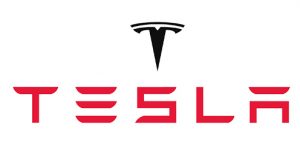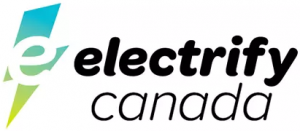E-VIP - The Electric Vehicle Information Portal Project
Purchasing an Electric Vehicle
Protecting our planet for generations to come.
FAQ's
On average, Electric Vehicles are around 30% cheaper to drive than ICE vehicles over their first five years. Currently, Electric Vehicles have a higher upfront cost than Internal Combustion Engine vehicles; most are in the range of just under $40,000 to $65,000. Offsetting this is the reduced cost in operations of an EV. Electric motors have far fewer moving parts to wear out than gas engines, with the extra advantage of no changes of oil, air cleaners, fan belts etc. When we compare the cost of electricity to gas and/or diesel, it is clear that electricity is less expensive per kilometer and therefore cheaper for a user to refuel. Usually, the higher initial cost to purchase is offset within about five years of EV ownership through with savings in fuel and servicing.
This is a common question and is typically associated with what is called range anxiety. The range varies widely but most newer model EVs can go at least 350 km, between charges and up to 600 km, between charges. Larger ranges of 700-900 km ranges or more, are just a few years away with newer models and better batteries coming out each year.
Though range anxiety is common among those interested in EVs, for the Orillia EV user much of southern Ontario is easily accessible within the average range.
- Toronto is 150 kms.
- Sudbury is 270 kms.
- Ottawa is 370kms.
- Montreal is 590kms.
- Niagara Falls 245 kms.
These are approximate distances. We recommend you confirm with maps and routes.
Certainly! There are two options for charging your EV at home.
- Level 1 – You can plug into a regular 110 volt, 15 amp receptacle that you might be located on your porch, side of your house or garage. Every EV sold has a plug and cord to plug into a wall outlet. This method is the slowest method to charge and depending on the battery size in your vehicle could take up to a full day or more to recharge a low battery to full. This option does ensure that you can charge almost anywhere you happen to be. A typical charge rate would yield 7 or 8 km per hour of charge.
- Level 2 – You can install a 240 Volt, 30-60 amps EV charger at home (it is comparable to one for your stove or dryer). Most EV owners will opt for this as it reduces the charging time to a few hours. This can cost between $800 to $2,500, depending on the current infrastructure of your home. Most EV owners charge overnight when electricity rates are cheaper. A typical Level 2 charge rate could be as high as 80 km per hour of charge.
There are several options:
- You can visit one of the many locations that has a level 2 charger. Some are free to use, sponsored by businesses or local governments, while others may have associated charges.
- Level 3 – You can visit a commercial charging station and use a Quick DC charger (also known as a super chargers). These usually do have fees involved but are extremely fast and rated at 30-45 minutes to charge to 80% from an empty battery. EV owners are reporting that the charging times can be quicker than 30 minutes, in some cases as low as 15-20 minutes. They can be found along major highways and are designed to enable long distance trips.
With more EVs on the road and the announcement in the 2021 federal budget it is expected that there will be many new charging locations to come across Canada.
As of July 2021 charging station in Orillia can be found at the following locations:
- Casino Rama
- Green Storage Orillia
- Best Western Plus Mariposa Inn
With more coming soon!
Yes, there are different types of chargers with different connectors, however they are easily understood. In North America the most common connector (think of the plug) is the SAE J1772 (for Level 1 and 2 charging) which is built into most EV makes and models and charging stations in Canada and the US. In addition to this is the Level 3 CCS (Combined Charging System) primarily used by European auto makers and the Level 3 CHAdeMO (Charge de Move) used by the Asian auto makers. Each of these are different in design and are not interchangeable, but many of the Level 3 charging stations provide both CCS and CHAdeMO plugs so you won’t be stuck with no way to charge.
Tesla has its own charging standards, stations and network which are not compatible with the above. You can’t plug your J1772, CCS or CHAdeMO into a Tesla charging station. Tesla owners do have an option to purchase a CHAdeMo adaptor to plug into a non-Tesla Level 3 charger. Recently some of the non-Tesla charging networks have begun to offer Tesla connectors as well. The Tesla charging network also has the advantage of being very extensive in both Canada and the US. You can currently drive from Nova Scotia to BC with Tesla Superchargers on the TransCanada. They are spaced about every 200 km.
These vehicles have been engineered to be extremely safe. The electronic system built into an EV checks for faults when it is plugged in and the charging stations will not dispense power until it is requested by the vehicle. Simply put, if there is a fault, the vehicle won’t ask for power and none will be provided through the network, so EVs can be charged outside in all types of weather.
Like ICE vehicles, Electric Vehicles do use more energy during the cold weather. Lithium-ion batteries have an ideal operating temperature where they are the most efficient and cold temperatures do slow battery chemical reactions, reducing power output, but Electric Vehicles are designed to protect themselves with onboard heaters to warm their batteries. It is normal for the range on a full charge to be reduced in cold temperatures depending on factors such as outside temperature and heat for the interior cabin. Most EV owners will report a drastic reduction (from 10-40% depending upon temperature) in range while using heaters to keep warm.
Because ICE vehicles are basically inefficient heat engines, all the wasted heat is available to heat the cabin. EV’s generate very little heat and so must use battery power to heat the cabin. With the improved ranges of current models and the introduction of heat pumps on some EV models, this is becoming less of an issue. With proper planning most trips are still well within the reduced range of current models. EV owners can also pre-warm the car while the vehicle is still plugged into a charging station, drawing power from the grid prior to leaving to avoid depleting the battery. Drivers can then use a lower heater setting with seat warmers (which use less energy than the cabin heaters on full blast) to keep warm.
There is not much noticeable difference in vehicle performance during cold weather. The same holds true for the opposite situation during extreme summer heat when using air conditioning.
Want to know more about idling your EV, here is an article that tells the story
Further reading can be found here in an American Automobile Association study, AAA ELECTRIC VEHICLE RANGE TESTING, https://www.aaa.com/AAA/common/AAR/files/AAA-Electric-Vehicle-Range-Testing-Report.pdf, © 2019 American Automobile Association, Inc. and
Many EVs have on board mapping software available to find the nearest charging station. Two of the most popular networks that list public charging stations are:
Tesla navigation automatically includes stops at Superchargers and even tells you what the state of charge will be when you arrive and approximately how long it will take to charge to 80% when you get there.
As of March 2021, there are 12,000 Public Level 2 and DC Fast Charging Ports across Canada and the number of charging stations available for public charging is increasing daily. Major companies and utilities – including PetroCanada, Shell (greenlots), Canadian Tire, Volkswagen, Flo, Electrify Canada, Tesla, and others – are building partnerships to install charging networks across Ontario and Canada. Visit these sites for further information and the charger locations in their networks. It is now possible to drive and charge coast to coast across Canada.
The cost to recharge a depleted battery to a full charge will depend on the size of the battery in the EV. Battery sizes can range from a low of 8.8kWH (Subaru Crosstrek Plug in Hybrid) to 100 kWh (Tesla Model X and S – Long Range). If charging at home and the current price per kWh is 0.13 cents charging to 100 kWh would cost $13.00. Most EV drivers charge during off peak hours when electricity rates are cheaper.
Charging away from home at commercial lots varies from charger to charger. Typically, Level 2 chargers are sponsored by businesses or governments and some are free chargers while others charge a nominal rate. Level 3 chargers normally charge rates that are much higher, due to the high installation costs. Unfortunately there is no standard rates for these chargers. However, both PlugShare and ChargeHub websites provide information about charging costs for each location listed on their websites, which is very helpful for EV drivers.
The experience of most EV owners who drive 20,000 km per year is that the annual energy costs is about $300, with a mix of 70% of the km charging at home and 30% charging with a network.
EVs can last a long time; it is easy to assume that these batteries will last the lifetime of the vehicles themselves. We do not have enough information on how long they can truly last because as newer and better batteries are coming on the market the true lifespan of an EV battery is unclear. Like all vehicles, EVs are recycled for metals at the end of their lives. With more EVs on the market there are more companies specializing in the specific recycling needed for these batteries.
Checking these sites may be worthwhile if you are considering recycling your used EV battery:
Li-Cycle – Founded in Toronto in 2016, Li-Cycle is a Mississauga lithium-ion battery resource recovery company and advertises that their recovery system addresses the need for a truly sustainable, ESG-friendly lithium-ion battery recycling solution and claim that they can recover ≥95% of all constituent materials found in lithium-ion batteries.
Lithion Recycling – Based in Quebec, Lithion Recycling has developed an efficient and cost-effective process to recover strategic materials from end-of-life and production waste of lithium-ion batteries. Lithion’s process allows up to 95% of battery components to be recovered and treated so that they can be reused by battery manufacturers, enabling the close of a circular lifecycle in batteries.
https://www.lithionrecycling.com/
American Manganese Inc. – Based in Surrey BC, they claim their RecycLiCo™ patented process offers a closed-loop and environmentally friendly recycling solution for cathode materials from cathode manufacturing waste and end-of-life lithium-ion batteries. It achieves over 99% extraction and purity of materials such as lithium, cobalt, nickel, manganese, and aluminum from cathode chemistries.
https://americanmanganeseinc.com/
Retriev Technologies – Based in Trail, BC. and with the increase in use of non-cobalt based constituents, Retriev recycles such constituents such as iron phosphate, manganese spinel, and nickel manganese. Regardless of the chemistry they claim to be able to recycle batteries through a single recycling process.
Global Tech Environmental – Operating globally, Global Tech Environmental offers recycling of NiMH Hybrid batteries and EV Li-ion batteries with shipping and handling information.
https://www.globaltechenvironmental.com/recycling-services/battery-recycling/electric-vehicle/
According to an article in the Business Section of the Toronto Star (June 5, 2021), “Researchers at the University of Toronto’s Electric Vehicle Research Centre have calculated that making an EV battery generates greenhouse-gas emissions equal to the annual emissions of a fossil-fuel powered vehicle.” A big part of that calculation is the cost to the environment of the mining of cobalt, nickel, lithium, aluminum and other raw materials that go into EV batteries.
The Union of Concerned Scientists, in a report entitled “Cleaner Cars from Cradle to Grave -How Electric Cars Beat Gasoline Cars on Lifetime Global Warming Emissions,” notes that over its lifetime—from manufacturing to operation to disposal—a battery-electric vehicle (BEV) cuts emissions just over 50 percent relative to a comparable gasoline car. In calculating this percentage, they considered the carbon emissions from building an EV, including the battery—and also included the production of electricity from coal-fired plants needed to run the vehicle over its lifetime. Even when using electricity produced from fossil fuels, the EV still reduces emissions by 50% compared to its fossil-fuel counterpart.
The good news here is that this percentage of reduced emissions will be much higher once the electrical grids are switched from coal to renewable energy sources. The report states that renewable electricity will be the main mechanism for reducing global warming emissions from EVs and “if the nation’s grid (in the US) relied on renewable energy for 80 percent of its power supply by 2050, the emissions from BEVs (including manufacturing emissions) would be 60 percent lower than those under the average U.S. mix today.” In Ontario our electric energy is much cleaner than coal as it’s produced using nuclear, hydro, wind and solar, so an EV in this province is very low in carbon emissions over its lifetime of use.
Anyone with a driver’s licence can test drive a vehicle at their local dealer or showroom. We advise that, prior to arriving, you confirm with dealers prior to arriving on their Electric Vehicle inventory as some are limited from dealer to dealer.
Alternatively, a test drive of selected makes and models can be arranged through Plug ‘N Drive, a not-for-profit organization that has a Discovery Centre in North York. In addition, there are many non-profit Electric Vehicle Groups that participate in car shows and demonstration events where members of the public can drive EVs. Sustainable Orillia works to ensure a yearly event where Orillia locals can test drive EVs – keep an eye out for the next date!
The first thing you need to know is that the idea of having to go to a dealer is a changing one. Tesla has never had dealers; they have showrooms, where you can test drive the car, but you buy online. Volvo has just announced that they are moving to this model and so is Cadillac. Some manufacturers will still sell through dealers but that will change over time.
However, whether you to go the showroom and buy online or to a traditional dealer, the first thing you need to do is evaluate your transportation needs. There are many options on the market and every vehicle has its pros and cons and price point. Someone who needs a vehicle for commuting the same distance everyday along a predictable route will need a vehicle with different capabilities than the person who travels long distances for a living. Are you looking for a new or a used vehicle? Used Electric Vehicles are becoming more available as newer models with improved ranges encourage existing owners to trade up. Once you know these details you will be able to guarantee that you get the best EV for your personal needs.
While we cannot recommend one source over another, there are plenty of on-line platforms you can check on your own with a Google search. There are more than we can list here, so this is just a few:
If you are looking for reviews on new and used EVs, try AutoTrader or Kijiji Autos https://www.autotrader.ca/editorial/search/?searchValue=Electric
If you are looking for video reviews, try the EV Revolution Show.
https://www.youtube.com/channel/UCj-ogvu9QSW0i0qdy-IV3hg
If you have been bitten by the Electric Vehicle bug and you want to dig really deep-
Charged Electric Vehicles Magazine
https://chargedevs.com/
Electric & Hybrid Vehicle Technology International
https://www.electrichybridvehicletechnology.com/
There are many such organizations in Canada, the US and worldwide. As Electric Vehicles become more commonplace these groups have organized to support and advocate for the Electric Vehicle industry. Typically, each group has its own website and social media outlets and tends to be very active in their outreach programs. Many offer memberships benefits for joining. Although Sustainable Orillia does not recommend one organization over another, we provide this contact information for your own assessment. Some of the larger groups include:
Electric Vehicle Society – visit their website to find a local chapter near you or an affiliate EV group listed by province across Canada.
https://evsociety.ca/
https://www.youtube.com/c/ElectricVehicleSociety
https://www.facebook.com/EVSociety/
https://www.instagram.com/evsociety/
Electric Mobility Canada
https://emc-mec.ca/
https://twitter.com/EMC_MEC
https://www.youtube.com/user/ElectricMobilityCA
http://www.linkedin.com/company/electric-mobility-canada/
Tesla Owners Club of Ontario
https://ontario.teslaownersclub.ca/
https://www.facebook.com/groups/955585071157248/
https://twitter.com/TeslaOwnersONT
https://www.instagram.com/teslaownersontario/
http://www.teslamotorsclub.com/forumdisplay.php/95-Canada
Tesla Motors Club (not affiliated with Tesla Motors, Inc.)
https://teslamotorsclub.com/
https://www.facebook.com/TeslaMotorsClub/
https://www.instagram.com/teslamotorsclubofficial/
https://twitter.com/TeslaMotorsClub
https://www.youtube.com/channel/UCrpEVeEwn6-ZDdhctb8xj8g
Yes, the Canadian federal government offers up to $5,000 on the purchase of a new Electric Vehicle. The rebate amount depends on type (BEV or PHEV), the battery size, suggested retail price and eligibility under the iZEV program.
List of eligible vehicles under the iZEV Program
There is also a $1,000 used vehicle rebate program available through Plug N’ Drive, a not-for-profit organization that has a Discovery Centre located in North York, Ontario.
https://www.plugndrive.ca/used-electric-vehicles-incentive/
There is also a $1,000 program if you scrap your old gas guzzler towards buying an Electric Vehicle. This incentive can be combined with the $1,000 from the purchase a used Electric Vehicle program for a combined total of $2,000.
https://www.plugndrive.ca/used-electric-vehicles-scrappage/
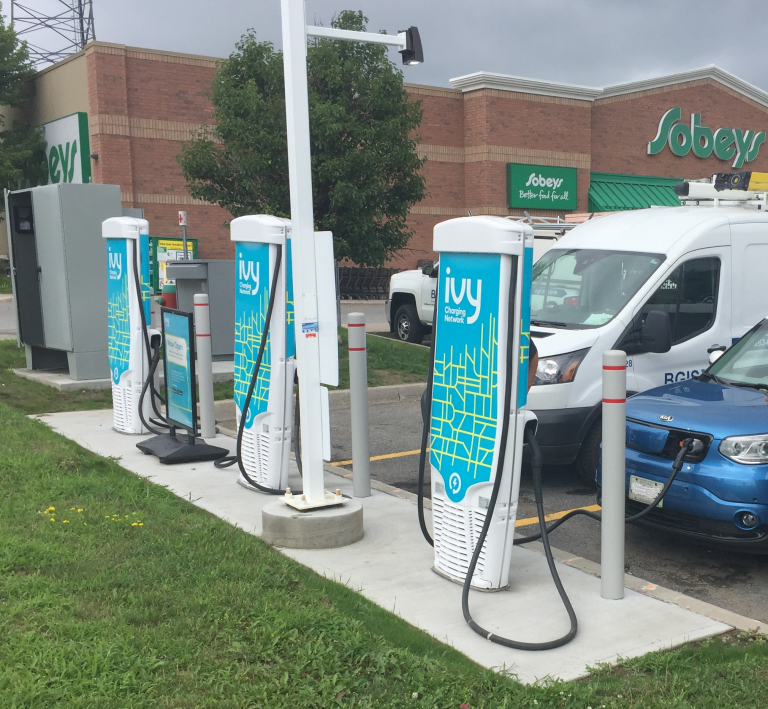
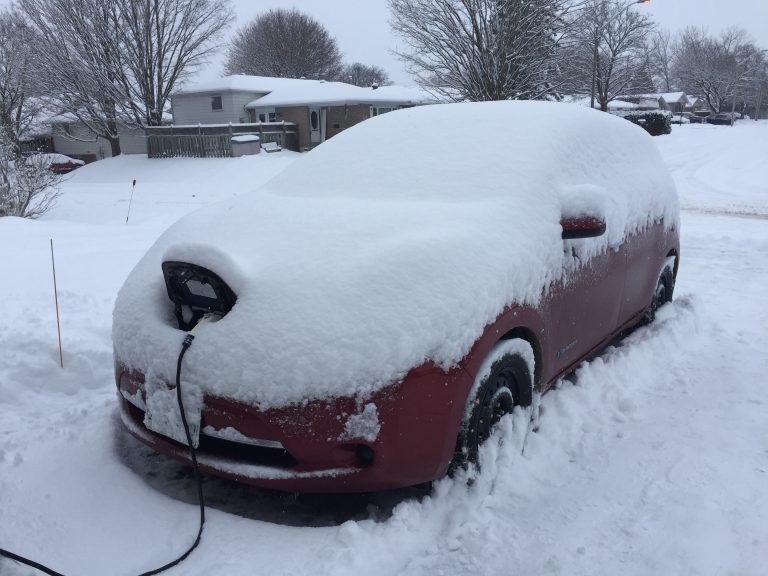
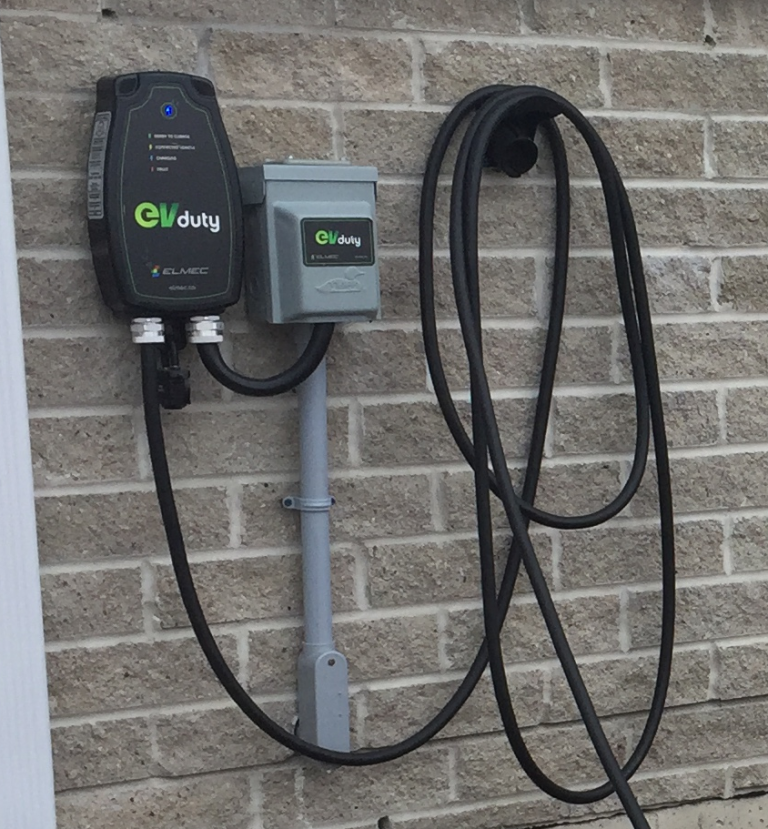
Your Links to the Charging Station Networks
Still have questions?
We would love to hear from you and comments to improve our service are always welcome. Please contact us.
We gratefully acknowledge the generous financial contribution made by the Orillia Area Community Development Corp. (CDC).

And the generous financial support of the CIBC

And the continuing support for Sustainable Orillia by the City of Orillia




